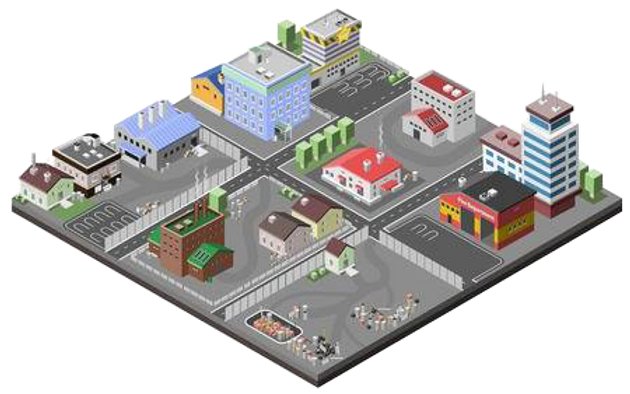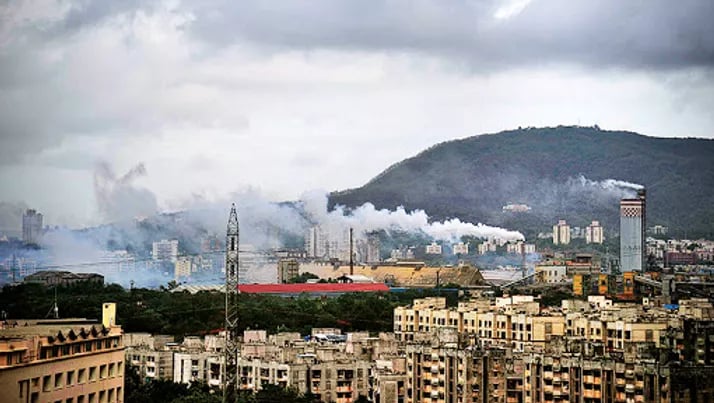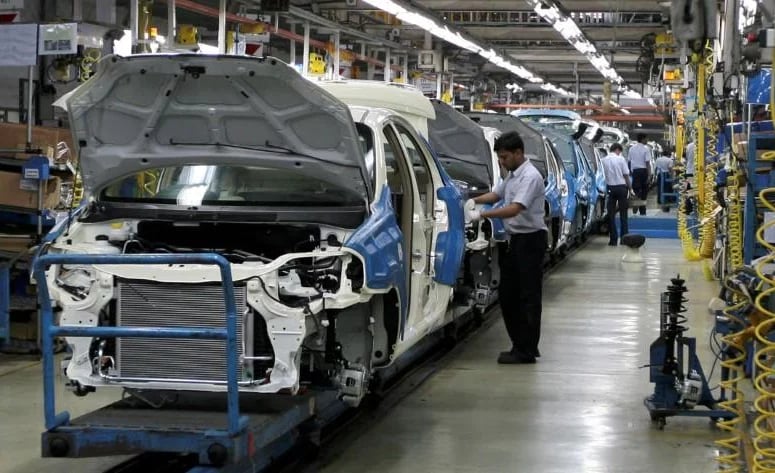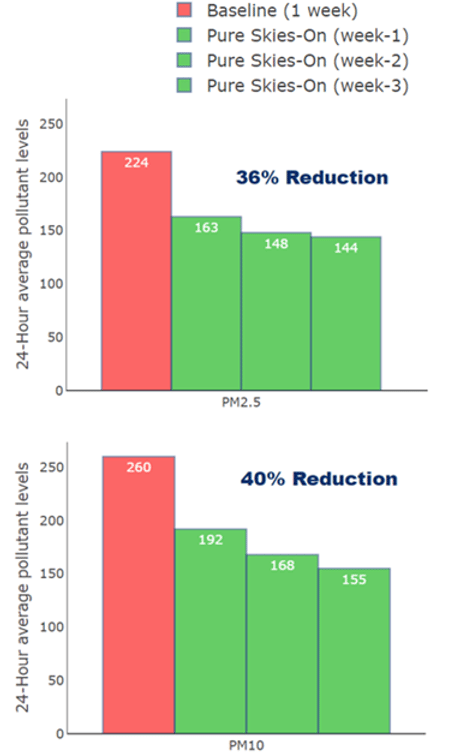Air pollution control equipment for Industrial zones

What we did:
A prominent industrial zone in Mumbai was subject to numerous complaints about air pollution from neighboring residential areas. In just 6 weeks, Pure Skies reduced average levels of particulate pollutants by 36-40%.
The problem:
Industrial zones are engines of economic growth. Unfortunately, air pollution from operations in these areas can be problematic. Public nuisance complaints, fines from state pollution control boards, and even plant shutdowns for polluting industries can make life difficult for companies and neighboring residential areas alike.

An industrial zone in Mumbai, with residential areas in the fore round. These have developed around such areas in recent years. PC: Nyooz.com
One of Devic Earth’s partners, a large industrial zone in Mumbai, wanted to improve air quality throughout their entire property. They had received a number of complaints from neighboring colonies as well as punitive fines.
Despite taking several measures, air quality measured inside the campus inside remained poor. Particulate matter – PM2.5 and PM10 – were 224 and 260μg/m3, respectively, averaged over one week. This is much higher than what is recommended by the National Ambient Air Quality Standards (PM2.5 < 60 μg/m3 and PM10 < 100 μg/m3) and more than 10 times higher than standards of the World Health Organization..
Employees were exposed to high levels of harmful pollutants which would impact their health and productivity.
The solution:
Two Pure Skies 9000 air pollution control systems were installed around the campus. The installation consisted of Pure Skies base stations, extender units, and third party air quality monitors (Environmental And Engineering Solutions Pvt. Ltd., Aligarh).

The system was configured to handle particulate pollutants (PM10 and PM2.5) across approximately 150 acres.
Outdoor air pollutant levels were monitored continuously at appropriate locations around the industrial zone to help the customer understand the efficacy of Pure Skies, as well as to provide real-time data for optimizing the smart technology in each Pure Skies unit.
It took just one and a half days to complete the installation. The base stations, extenders, and air quality monitors were installed on either building rooftops or utility poles. No floor space was required. Equipment was plugged in and connected wirelessly to the local GSM data network in the area.
Power requirements: Routine power supply (ordinary 10A sockets). Each base station and air quality monitor are equipped with battery backup.
Once online, the performance of each air pollution control unit is monitored by Devic Earth 24x7.
The outcome:
After Pure Skies was powered On, air quality showed a steady improvement in a short period (Figure 1).
In just three weeks, Pure Skies reduced levels of PM2.5 and PM10 were reduced by 36% and 40%, respectively.
Plant output, number of workers, and local weather patterns remained stable during this period. There was no precipitation (rain).

Figure 1: Change in pollution levels with Pure Skies at an industrial zone. The red and green bars are the Pure Skies-Off(7-days) and Pure Skies-On periods (7-days), respectively. The successive green bars depict the incremental decrease in the levels of the pollutants over 7-day intervals. Data source: 3rd party air quality monitor (Environmental and Engineering Services Pvt. Ltd., Aligarh), pre-calibrated against a reference grade monitor.
Pure Skies is a state-of-the-art air pollution control system that ensures that the employees working in the industrial zone as well as those living in neighboring communities breathe clean air.
